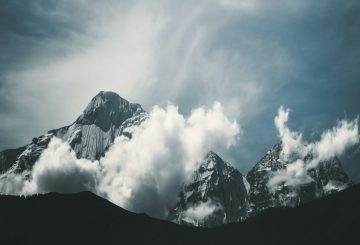Lou McNally, một nhà sưu tập đĩa trẻ, gần đây đã tìm thấy một album China Crisis cho cha cô, một fan của ban nhạc có trụ sở tại Liverpool. Có một sức hấp dẫn độc đáo đối với các đĩa vinyl, cho dù đó là tiếng kêu của kim tiêm hay âm thanh ấm áp, và định dạng âm nhạc này tiếp tục phát triển mạnh.
Brian Wafer tổ chức các hội chợ thu âm trên khắp Đảo Bắc, bán nhiều loại đĩa cũ, tái phát hành, sưu tầm và mới. Anh ấy tin rằng bạn có thể biết thời gian trong ngày bằng cách xem ai đang duyệt tại hội chợ. Những người hâm mộ metal và DJ thường đến vào giờ cuối cùng, thường bị nôn nao từ các hoạt động của đêm trước.
Wafer từng điều hành một cửa hàng âm nhạc và hãng đĩa độc lập, Imahit Records, ở New Plymouth trong những năm 1980. Tuy nhiên, khi thị hiếu và định dạng âm nhạc phát triển, cửa hàng đã đóng cửa. Bây giờ, anh ấy thích tổ chức các hội chợ thu âm như một sở thích hiệu quả.
Wafer tin rằng sự phổ biến liên tục của vinyl là do bản chất hữu hình của nó. Nhiều người thích hoài niệm về việc nắm giữ kỷ lục và sống lại quá khứ của họ. Anh ấy luôn tìm kiếm hồ sơ thông qua các thị trường trực tuyến, bán nhà để xe và giải phóng bất động sản.
Tại một hội chợ kỷ lục gần đây ở New Plymouth, các thùng của Wafer chứa đầy đĩa đơn bảy inch. Tuy nhiên, đồng nghiệp Peter White tập trung vào âm nhạc liên quan đến New Zealand, đặc biệt là những món đồ hiếm. Ông giải thích vết cắt bằng máy tiện là gì – một bản ghi rõ ràng, dẻo, khắc, giòn và có âm thanh thô, nhưng cực kỳ hiếm. Anh thậm chí còn có một đĩa đơn cắt máy tiện do Beastie Boys thực hiện trong chuyến lưu diễn ở New Zealand của họ, có giá 1000 đô la.
Allan Day, một nhà sưu tập vinyl lâu năm, yêu thích sự hoài niệm về vinyl. Anh ấy đánh giá cao các ghi chú và lời bài hát đi kèm với các bản ghi âm, một cái gì đó còn thiếu trong các bản tải xuống kỹ thuật số.
Sarah Sampson, một giáo viên, đã tìm thấy một album tổng hợp punk, AK79, cho anh trai cô, một thành viên của Netherworld Dancing Toys. Lou McNally, 26 tuổi, là một trong những nhà sưu tập trẻ tuổi tại hội chợ. Cô thích khía cạnh hoài cổ của việc thu thập đĩa hát và tìm thấy một kỷ lục Khủng hoảng Trung Quốc cho cha mình.
Wafer thấy nỗ lực tổ chức các hội chợ kỷ lục đáng giá. Bất chấp công việc liên quan, anh ấy coi đó là niềm vui hơn là một công việc vặt. Là một người tự xưng là một người nghiện vinyl, anh ấy đã ở trong yếu tố của mình tại những sự kiện này.



























































